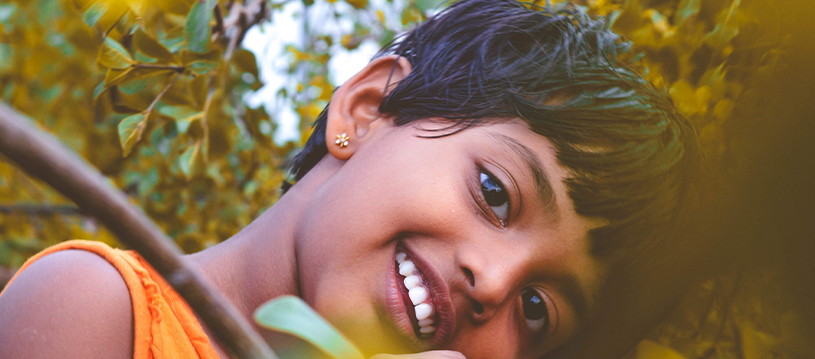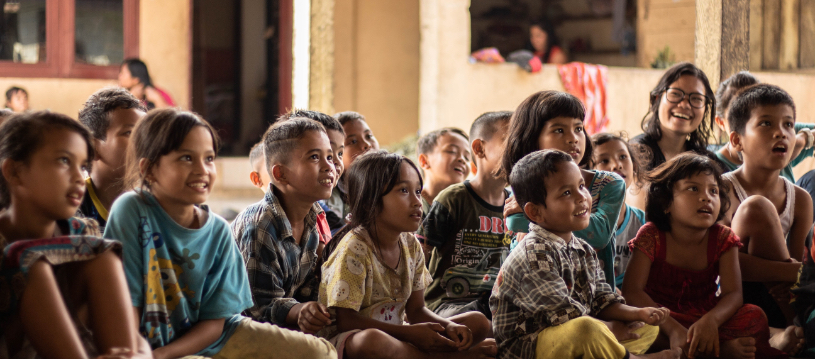Dive into the details of child labour with this curated collection of resources
AGRICULTURE
FAO: Child Labour in Agriculture

2021
This is your one-stop source for essential information on ending child labour in agriculture. This new website from FAO operates as a hub for publications, visual materials, and multimedia content.
Why agriculture? Worldwide, the majority of child labour (70%) is found in the agriculture sector. Today, 112 million children are engaged in crop production, livestock, forestry, fisheries or aquaculture.
FAO’s work: The organization aims to address the root causes of child labour in agriculture such as rural poverty and the lack of social protection.
Linguistic diversity: The site is available in the six official languages of the United Nations, providing information useful for research and advocacy for geographically diverse audiences.
LATEST TRENDS
Child Labour: Global estimates 2020, trends and the road forward

2021
The ILO and UNICEF have joined forces to produce the latest report on the global estimates and trends around child labour. It warns that an additional 9 million children are at risk as a result of the COVID-19 pandemic.
The bad news: The number of children in child labour has risen to 160 million worldwide – an increase of 8.4 million children in the last four years.
The good news: The International Year and Alliance 8.7 encourage Member States, businesses, trade unions, civil society, and regional and international organizations to redouble their efforts in the global fight against child labour by making Action Pledges.
Short version: If you’re busy and just want to see an overview of the numbers, check out the executive summary. See the dedicated Trello board for more assets.
COVID-19
COVID-19 and child labour: A time of crisis, a time to act

2020
For the first time in 20 years, child labour may be on the rise. What is certain is that the COVID-19 pandemic is reversing years of progress. This report explores the root causes of how the crisis is affecting child labour.
By the numbers: The last two decades have seen 94 million fewer children in child labour. This remarkable accomplishment is now under threat.
Why it matters: The pandemic is likely to make the global target to end child labour harder to achieve.
Bookmark for later: The ILO and UNICEF are developing a simulation model to estimate the impact of COVID-19 on the global prevalence of child labour. Estimates will be released in 2021.
GLOBAL SUPPLY CHAINS
Ending child labour, forced labour and human trafficking in global supply chains

2019
Global supply chains generate growth, employment, and development. They have also been historically linked to human rights violations and abuses. This report is the first-ever attempt to measure those abuses and violations on a large scale.
The big picture: In global supply chains, child labour ranges from an estimated 9% in Northern Africa and Western Asia to 26% in Eastern and South-eastern Asia.
What works: To tackle the problem, we need comprehensive approaches, based on authoritative international standards and informed by workers’ grievances, bottom-up interventions, and community engagement.
The bottom line: All actors, from governments to private companies, are responsible for addressing these human rights violations.
POLICY MAKING
Ending child labour by 2025: A review of policies and programmes

2018
The latest estimates show that, globally, 152 million children are in child labour. That means one in 10 children worldwide are affected. How can we get back on track? This report shows the way forward, with policy approaches and responses.
Reality check: Progress in reducing child labour has been uneven over the period since global monitoring began in 2000, and lately has been slowing.
Policy prescriptions: Actors including governments, workers’ and employers’ organizations, and the wider international community must work together to address an array of factors that push or pull children into child labour.
The road to 2025: Focus areas include implementing an integrated rights-based approach, ensuring an adequate legal architecture, and building social protection systems, among others.
LATEST TRENDS
Global Estimates of Child Labour: Results and trends, 2012-2016

2017
Child labour remains endemic. To eliminate it, we need economic and social reforms, effective partnerships, and much more. This report describes the scale of child labour in the world today and key policy priorities to reach the 2025 target.
By the numbers: Globally, it is estimated that 72,525,000 children are in hazardous work, 151,622,000 are in child labour, and 218,019,000 are in employment.
Warning signs: Child labour increased in Africa, despite the fact that many African countries had taken strong action to combat child labour. Gender differences are another concern – the decline in child labour among girls was only half that of boys.
The good news: The ILO is working with Alliance 8.7 members across four main goals: accelerating action towards compliance with the target; conducting research and sharing knowledge; driving innovation; and increasing and leveraging resources.
POLICY MAKING
The effects of public policy on child labor: current knowledge, gaps, and implications for program design

2017
Children don’t have a choice about child labour. Their circumstances choose for them, a decision dependent on factors like income, uncertainty, and relative returns to work and education. This review of 33 impact evaluations looks at how social protections and labour programmes affect child labour.
Five areas: Policy interventions are organized by: labour-oriented programmes, credit and microfinance, cash transfers, schooling incentives (vouchers, food programmes), and targeted child labour programmes.
For example: Although public works programmes do not target child labour directly, evidence shows that they can make the problem worse. In Ethiopia, women who took up paid employment relied on their daughters to help with household chores.
Call to action: Child labour is closely linked to a variety of policy areas, and more research on these links is needed.
LATEST TRENDS
Joining forces against child labour – Inter-agency report for The Hague Global Child Labour Conference of 2010

2010
Child labour impedes development – the numbers bear it out. This report calls for child labour to be put in the spotlight of national development agendas.
Regionally speaking: There is a need to scale up efforts against child labour, particularly in Sub-Saharan Africa.
Human costs: Child labour impedes broader national development goals because, for example, many children that work do not attend school.
The big picture: For too long, child labour has been seen as an isolated issue. Instead, we need a comprehensive policy response built on an adequate legal foundation.